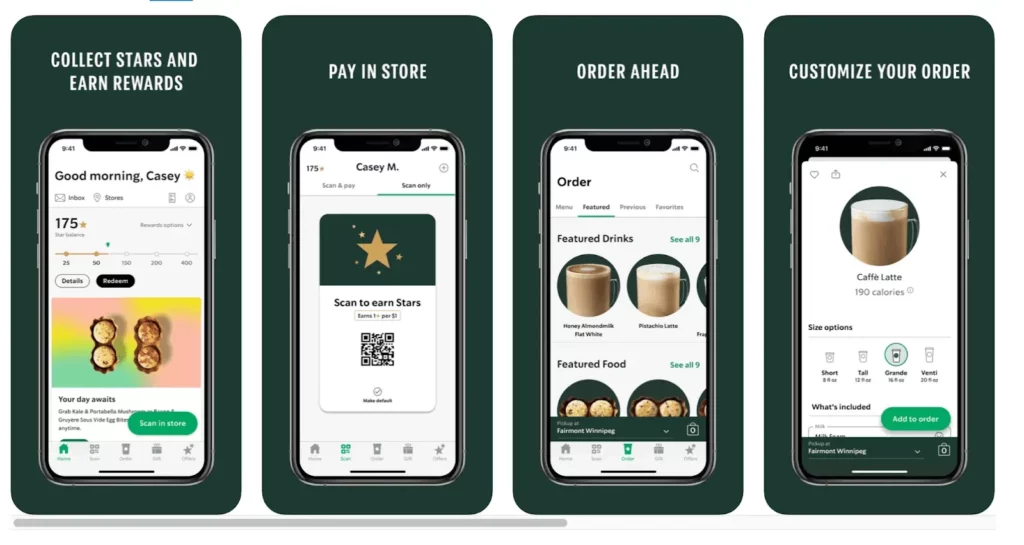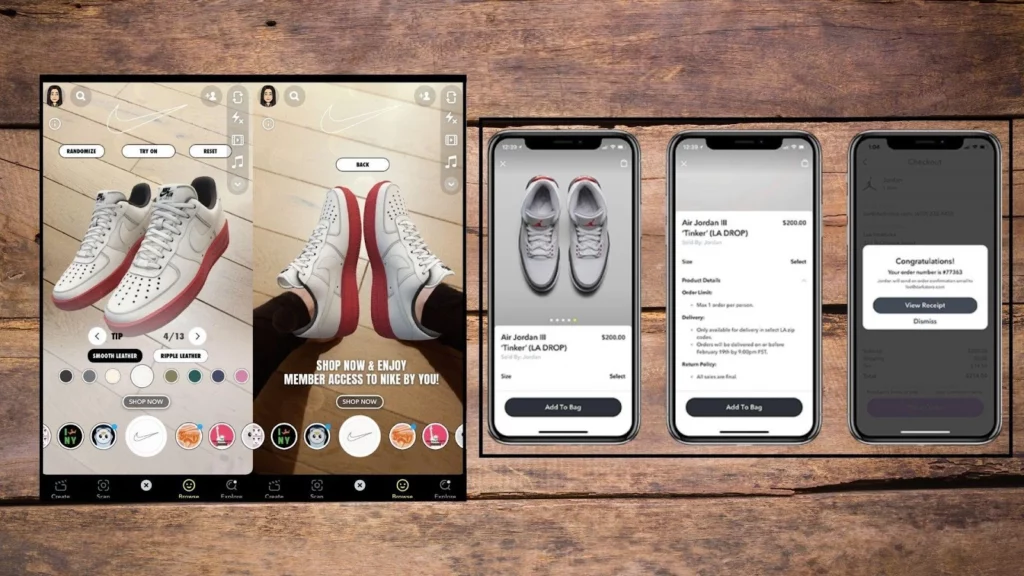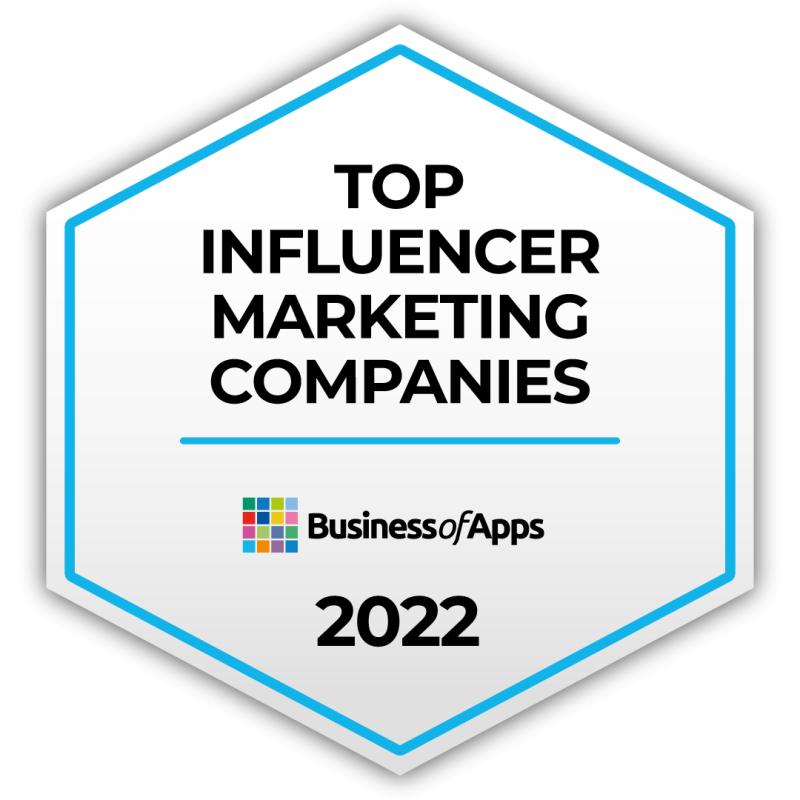What is Cross-Channel Marketing?

Cross-channel marketing aims to create a consistent experience across a variety of digital channels. Read on to find out how to use this vital tool.
What is Cross-Channel Marketing?
Cross-channel marketing is a strategic approach that enables brands to create a seamless and integrated customer experience across multiple marketing channels. Unlike single-channel or multi-channel marketing, cross-channel marketing ensures that each touchpoint—whether it’s email, social media, paid search, or in-app notifications—works together to guide customers through their journey. By leveraging cross-channel marketing software, businesses can track user interactions and optimize engagement based on data-driven insights. This holistic approach enhances brand visibility, improves customer retention, and drives higher conversion rates by delivering personalized and relevant messaging at every stage of the buyer’s journey.
Effective cross-channel marketing campaigns rely on advanced cross-channel marketing intelligence to analyze customer behavior and preferences, allowing brands to make informed decisions. A well-executed cross-channel marketing strategy utilizes cross-channel marketing attribution to measure the impact of various touchpoints and refine marketing efforts accordingly. Leading cross-channel marketing platforms help businesses implement and scale these strategies efficiently, providing tools for automation, real-time analytics, and customer segmentation. Successful cross-channel ads create a unified brand message that resonates across different platforms, ensuring consistency and engagement. For businesses looking to understand cross-marketing meaning in practice, numerous cross-channel marketing examples showcase how integrating multiple channels leads to a more cohesive and effective customer journey.
Cross-Channel vs Multi-Channel Marketing
If you are a marketer and have been keeping your ear to the ground, you will probably have come across the term cross-channel marketing, as well as multichannel marketing. Sometimes, these terms are used interchangeably, but there are some key differences between the two.
Like many concepts in the marketing parlance, cross and multi-channel marketing are often poorly understood and difficult to define concisely. Let’s take a closer look at what they mean exactly.
What is Multichannel Marketing?
Multichannel marketing simply means that you have some sort of a marketing presence across more than one mode of communication – e.g. Instagram adverts and an email newsletter.
What is Cross-Channel Marketing?
Cross-channel marketing comes under the umbrella of multichannel marketing, but specifically refers to the practice of creating a seamless experience across the various channels.
To understand modern marketing, we need to take a look at the way customers interact with media, as this is the way that you can reach them. Long gone are the days when the television, radio, and newspapers were the only route to your prospects. Nowadays, you have any number of different digital and analog means of reaching your prospects, from emails to Instagram adverts to push notifications. But this increase in exposure comes with its challenges and requirements.
In a perfect world, you could interact with your customers through a single platform for every step of the buying process. Can you imagine how easy that would be? Unfortunately, life is rarely as clean and tidy as we would like it to be, and the relationship between brand and consumer is no different.
Why Should You Use Cross-Channel Marketing?
In today’s digital landscape, consumers engage with brands across multiple touchpoints, making cross-channel marketing essential for creating a seamless and personalized customer journey. Unlike traditional siloed approaches, cross-channel marketing campaigns integrate various channels—such as social media, email, paid search, and mobile apps—to deliver consistent and relevant messaging. Businesses that adopt a cross-channel marketing strategy can improve engagement, drive higher conversions, and increase customer loyalty by delivering the right message at the right time. Utilizing cross-channel marketing software allows brands to automate interactions, track user behavior, and optimize campaigns for better results. By leveraging cross-channel ads, companies ensure their messaging remains unified across different platforms, reinforcing brand identity and increasing visibility.
A major advantage of cross-channel marketing is its ability to provide in-depth insights through cross-channel marketing intelligence and cross-channel marketing attribution, helping marketers understand which touchpoints drive the most value. A well-implemented cross-channel marketing platform enables brands to analyze and refine their approach based on real-time data, ensuring resources are allocated effectively. Successful cross-channel marketing examples demonstrate how integrating multiple platforms enhances the overall customer experience and leads to higher retention rates. Understanding cross-marketing meaning is key to building a cohesive strategy that aligns with consumer behavior, ultimately resulting in stronger brand performance. As competition increases, adopting marketing cross-channel strategies becomes essential for brands looking to maximize their reach and long-term success.
Multichannel Marketing Mirrors Media Multitasking
Media-multitasking has become the norm. Now more than ever, consumers’ attention is split across multiple platforms and devices.
The main benefit of employing multi-channel marketing is that it ensures maximum exposure of prospects to your marketing message. Your brand essentially follows your prospect, agnostic of the device or platform they are using at any specific time.
The ‘rule of seven’ is a common refrain among marketers. The idea is that, on average, a prospective customer will need at least 7 exposures to your marketing materials before they are moved enough to take action. Regardless of the exact number, it is highly unlikely that you will convert someone the first time that they interact with your brand, unless you deal in low-end consumer products such as candy bars.
With a multi-channel approach, you maximize the number of opportunities to create an interaction between yourself and the customer, and the ‘rule of seven’ can be fulfilled a lot faster. In practical terms, this means moving prospects through your sales cycle in a more timely and efficient manner.
What Are the Benefits of Cross-Channel Marketing?
We live in an era of unparalleled data production. Everything we do, from the places we go to the images we look at to the people we follow on social media, feeds into a profile that marketers use to personalize the content that a person might see.
In an age where attention is the most valuable and widely traded commodity, people don’t have time to entertain marketing messages unless they are highly relevant to their specific needs at that exact point in time. The brand that communicates the most personally relevant information and value is the one that wins.
Engagement
As marketers move further and further away from caring about vanity metrics, such as email open rate, the level of engagement created by content is being brought to the forefront.
Single channels of communication can have a modicum of success, but they create a bottleneck whereby you rely on a specific action from your prospect, such as checking their social media at a particular time, in order to transmit your content.
Utilizing a multitude of different channels or platforms means you can deliver your marketing message regardless of the time of day, or the stage of the sales cycle the customer happens to be in. The point is to be able to pick up a prospect at any stage of the sales cycle through any one of your marketing channels.
Loyalty
As outlined above, it takes a certain number of repeated exposures to a marketing message before your prospect is likely to take action. One of the challenges in a traditional multi-channel approach is ensuring that your marketing tone, style, and information remain consistent across all platforms. With a centralized, cross-platform, multichannel approach, everything is under the same banner. Ensuring that the customer experience is the same irrespective of the platform is critical in increasing satisfaction, which can then lead to repeated interactions with your brand.
The Challenges of Cross-Channel Marketing
While cross-channel marketing offers significant advantages, it also presents several challenges that businesses must navigate to achieve success. One of the main difficulties is ensuring consistency across multiple cross-channel marketing campaigns, as different platforms have unique formats, audiences, and engagement patterns. Maintaining a seamless user experience across cross-channel ads requires a deep understanding of cross-channel marketing intelligence to track customer interactions and optimize content effectively. Additionally, integrating data from various sources can be complex, making it difficult to establish a cohesive cross-channel marketing strategy that aligns with user behavior. Businesses must also select the right cross-channel marketing platform and cross-channel marketing software to streamline campaign management and automate processes efficiently.
Another significant challenge is accurate cross-channel marketing attribution, which determines the impact of each touchpoint in the customer journey. Without proper attribution, marketers may struggle to allocate budget and resources effectively, leading to inefficient spending and missed opportunities. Additionally, cross-marketing meaning varies across industries, requiring tailored approaches to fit different customer segments and business objectives. Ensuring compliance with platform-specific guidelines and privacy regulations further complicates marketing cross-channel efforts. Despite these obstacles, successful cross-channel marketing examples show that with the right tools, data-driven insights, and continuous optimization, businesses can overcome these challenges and create highly effective, personalized marketing experiences that drive growth and engagement.
Cross-Channel Personalization
Personalized marketing doesn’t just benefit the people doing the selling. Consumers become more likely to encounter things in line with their interests, rather than having electronic feeds cluttered with useless, irrelevant products and ideas.
Data is the fundamental component of any successful cross-channel marketing strategy. With cross-channel marketing, data about the way a prospect interacts with a brand is shared across channels so a more accurate picture of their interests and likely purchasing decisions can be constructed.
What Makes a Successful Cross-Channel Marketing Strategy?
Cross-channel marketing is about far, far more than simply publishing your content in various mediums. Even if it has been repurposed, content should always be specific to the medium that it is being presented in.
Cross-channel marketing requires you to mix the different channels in a way that ensures a highly personalized, targeted, and seamless delivery of your marketing message.
In multi-channel marketing, you might run an email campaign, publish some blog posts and create a neat animation for your favorite social media platform, but these efforts are treated as separate and self-contained. Each marketing campaign could have its own aims, goals, and creative teams in charge of making the decisions about what those are.
This brings us to one of the major obstacles you may encounter when trying to put together a successful cross-channel marketing campaign, and it has to do with the structure of the companies behind the brands.
Cross-Channel Journey Map
As we move more and more towards an online and interconnected society, our use of different devices has changed. These days, 98% of US citizens change digital devices over the course of a given day. This change in buyer behavior requires a shift in approach to marketing.
For cross-channel marketing to be effective, it needs to provide a logical way for the prospect to move from one stage of the sales cycle to the next, regardless of which platform or device they consume the media on.
For example, if a lead reads an article relating to a particular issue, the marketing email they receive later could contain information about your product that can help them solve that issue. Then, when they interact with social media, they’ll be targeted with an advertisement tailored to their demographics that highlights how effective your product is at fixing their specific issue.
The problem is that, in many companies, the various teams such as social media, email, etc. are effectively isolated from each other. Each team may have a different set of goals, and a different way of measuring progress. Developing and implementing a universal set of key performance indicators can ensure that all teams are working towards the same goals and that big-picture success can be clearly measured.
Consumer Behavior and Target Persona
Whether your brand is focused on delivering the latest in green energy solutions, or you’re aiming to compete with the biggest high-street fashion brands, the most critical aspect of any cross-channel marketing plan is to create your target persona. Without a crystal-clear vision of the person you want to sell to, every marketing effort becomes little more than a hope, cast to the winds of chance.
As discussed earlier, attention is the currency that digital marketers should be concerned with, and it is a resource that is in ever-dwindling supply. Every day, the average person is bombarded with hundreds of messages per hour.
The question of what constitutes effective modern marketing is essentially about how best to cut through the noise. Without that crucial step, you have no chance of making a lasting impression on anyone, let alone moving them along to the next stage of your sales cycle.
Cross-channel marketing offers a potential solution to this conundrum by engaging with prospects where they are, and in a way that seamlessly integrates into their experience but won’t fade into the background.
Cross-Channel Marketing Strategy
If you are only just beginning with cross-channel marketing, you should be aware that you will probably have to modify your strategy continuously as you collect more data and your skill level increases.
At the risk of stating the obvious, every industry, target persona, and marketing campaign will have its unique challenges and requirements. That being said, some general principles can help the modern marketer move in the direction of success.
1. Centralize Your Data
Once you have done your research and formulated your target persona, your next task is going to be to unite all of your data within a CDP (customer data platform).
There are several different platforms available, and it is outside the scope of this article to go into detail on individual pieces of software. Whatever digital tools you decide to use, they should be able to capture client data at each of their touch points. This is normally achieved through the use of tracking cookies to link web activity with a specific individual.
2. Segment Your Customers Effectively
Only once your data has been collated and unified can you begin to look for trends.
If you have chosen well, your CDP should be able to generate reports that can give great insights into your data.
Scan your data for any obvious correlations, as well as clear indicators of efforts that worked better or worse than others.
By understanding the commonalities among different segments of your customer base, you can better strategize which channels and forms of marketing to focus on. These sort of insights can even help steer the future direction of the kinds of goods and services you provide.
3. Customize Your Content
Once you have done the grunt work of segmenting your customers along meaningful lines, you can effectively tailor your content so it matches the interests and desires of your individual prospects’ needs.
By far the easiest way of achieving personalization based on the data you have accumulated in your CDP is by integrating it with your content management system (CMS). The CMS can then use the data on your customers to serve them a carousel of dynamic content that is based on the criteria you have deemed relevant.
Creating customized content without an integrated CMS is more challenging, but it can still be done. For example, you might identify three different segments within your audience that have their specific pain points. You could then create three different versions of your newsletter, addressing each of these points in turn, and target them at the relevant customers.
4. Learn from the Results
Collating your data from all of the different channels you interact with your audience on has the benefit of a broad-scale perspective. Previously, it would have been all but impossible to accurately track how your efforts in one particular marketing channel might affect a different platform or stage of the sales process.
With data from every single one of your prospects’ touch points, you can run more effective a/b testing, as well as adjust the traits of your target audience for social media ads, etc. The best part is that every marketing campaign you run on any platform will only serve to increase your understanding of your customer personas and how your audience interacts with your brand and content.
The Best Strategy? Learn from Industry Leaders
It should be apparent by now that there is no one-size-fits-all creative solution that will work for every platform.
If you have the time and money to spend, it is perfectly possible to create your own market-dominating strategy from the ground up and ride it all the way to the moon. As long as you have the data, and you know what to do with it.
Data really is the cornerstone of any successful marketing strategy in the 21st century. Knowing what to capture and then how to use that data to optimize across different channels, is a multifaceted and complex topic.
Every marketing platform comes with its own intricacies, demographics, and user behaviors, and content must be specifically adapted to suit these variables.
If you are serious about taking your digital marketing strategy to the next level, we’ve curated a webinar with some of the best minds in the industry to teach you how to adapt creatives for every platform.
In the webinar, you’ll learn how to optimize your digital marketing strategy through creative optimization, leveraging user data to create cross-channel content that blows your competition out of the water.
Tips for Creating a Successful Cross-Channel Marketing Campaign
- Start with a well-defined strategy
To build a high-performing cross-channel marketing campaign, businesses must start with a well-defined cross-channel marketing strategy that aligns with customer behavior and business objectives. - Ensure a seamless cross-channel experience
Understanding what cross-channel marketing is crucial—it involves creating a seamless experience across various channels such as social media, email, search engines, and mobile apps. - Leverage cross-channel marketing intelligence
Marketers should use cross-channel marketing intelligence to track user interactions and preferences, allowing them to deliver personalized and relevant content. - Use cross-channel marketing software
Utilizing cross-channel marketing software can help automate processes, manage assets efficiently, and ensure consistency across platforms. - Maintain a unified brand message
A key aspect of effective cross-channel marketing campaigns is ensuring that all cross-channel ads complement each other rather than functioning in isolation. - Implement cross-channel marketing attribution
Accurately measuring the performance of each channel helps optimize spending. Without proper attribution, brands may struggle to determine which touchpoints drive the most conversions. - Leverage data and real-time insights
A strong cross-channel marketing platform enables businesses to analyze data, test different approaches, and refine their strategy based on real-time insights. - Learn from industry examples
Looking at cross-channel marketing examples from industry leaders can provide inspiration and demonstrate best practices for integrating multiple platforms. - Adopt a holistic approach to customer engagement
Understanding cross-marketing meaning helps marketers develop a holistic approach that enhances customer engagement across all touchpoints. - Focus on data-driven optimization
By focusing on data-driven decision-making and continuous optimization, businesses can successfully execute marketing cross-channel campaigns that maximize reach, engagement, and ROI.
Cross-Channel Marketing Examples: How Top Brands Succeed
Many leading brands have successfully implemented cross-channel marketing to create seamless customer experiences and drive engagement across multiple platforms. For example, Starbucks utilizes a highly effective cross-channel marketing strategy by integrating its mobile app, loyalty program, and in-store experiences.
Customers receive personalized offers via email and push notifications, which sync with their app purchases and in-store visits, creating a unified journey. By leveraging cross-channel marketing intelligence, Starbucks ensures that every interaction feels tailored to the user’s preferences, increasing brand loyalty and engagement. Their cross-channel marketing campaigns also incorporate social media and location-based cross-channel ads to keep users engaged and informed about promotions, reinforcing their brand presence across all touchpoints.
Another strong example is Nike, which excels in marketing cross-channel by connecting its e-commerce platform, mobile app, and social media presence.
Nike uses cross-channel marketing software to deliver personalized product recommendations, fitness challenges, and exclusive content through multiple digital channels. Their cross-channel marketing attribution system helps measure customer touchpoints, ensuring each interaction contributes to the overall journey. The brand’s use of influencer partnerships, in-app exclusive drops, and engaging social media content highlights the power of cross marketing in creating a cohesive brand experience. These cross-channel marketing examples showcase how businesses can use a cross-channel marketing platform to analyze data, optimize engagement, and drive conversions through a well-integrated approach.
Ready to Elevate Your Cross-Channel Marketing Strategy?
Mastering cross-channel marketing requires the right strategy, tools, and expertise to create seamless customer experiences across multiple platforms. Whether you’re looking to optimize your cross-channel marketing campaigns, improve cross-channel marketing attribution, or leverage advanced cross-channel marketing intelligence, having a well-defined approach is key to increasing engagement and conversions. The success stories of industry leaders like Starbucks and Nike showcase the power of cross marketing, demonstrating how a strategic blend of cross-channel ads, automation, and data-driven insights can maximize brand impact.
If you’re ready to take your cross-channel marketing strategy to the next level, yellowHEAD can help. With our expertise in cross-channel marketing software, creative optimization, and AI-driven analytics, we empower brands to unlock new growth opportunities and improve performance across all digital touchpoints. Contact us today to discover how we can enhance your cross-channel marketing platform and drive meaningful results for your brand.
Get in touch with yellowHEAD now!
This article was updated in April 2025 by Vered Aviv





















